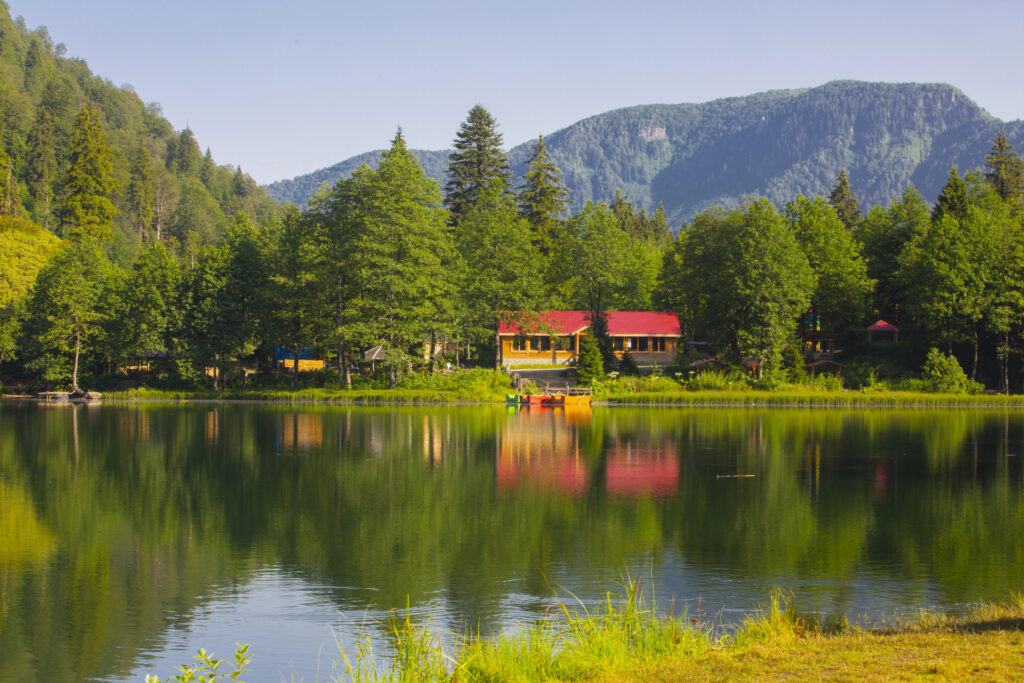
Domestic tourism is expected to be on the rise this summer, so more cabin owners are curious about the potential income their properties could generate. Recent data indicate that searches for domestic stays have risen by nearly 20% this spring, as more Canadians opt to explore hidden gems and beloved nearby destinations. Many are planning to rediscover the charm and convenience of summer cabins offering rustic retreats.
For cabin owners, there are several factors to consider when assessing their potential rental income.
Market Demand
Evaluating the rental potential of Canadian summer cabins begins with gauging local demand. Domestic travel in Canada is likely to be on the rise, as more people are looking to stay in local locations or at least within Canada. Many households are looking for affordable, scenic escapes during the summer months. This heightened local interest means that cabins situated in or near popular recreational areas, such as lakes and parks, are in a favourable position to attract renters.
Location
One of the most critical factors to assess is the cabin’s location. Properties in high-demand tourist areas, like the Muskoka region in Ontario or the coastal retreats in British Columbia, generally command higher rental rates and experience more consistent occupancy. The location also influences seasonal appeal, as some summer cabins may be poised for year-round appeal, while others are strongly limited to the summer months only. Proximity to attractions such as hiking trails, boating, or cultural hotspots can add considerable value.
Property Characteristics and Amenities
A comprehensive evaluation of the cabin’s features and amenities is necessary. Although a rustic experience is appealing, modern travellers expect more than a basic shelter in the woods; they still often want comfort, connectivity, and convenience (although some niche properties may position themselves as a getaway to disconnect).
Essential amenities, such as internet, well-equipped kitchens, and cozy interiors, can significantly improve guest satisfaction and drive repeat bookings. Enhancements like hot tubs, scenic decks, and pet-friendly policies not only cater to the evolving expectations of guests but can also justify premium pricing. In competitive markets, even subtle upgrades, including smart home features, eco-friendly designs, or outdoor recreational facilities, can differentiate a cabin to boost its rental potential.
Seasonal Rental Patterns and Yield Analysis
Since cabins typically enjoy a seasonal rental cycle, it is vital to analyze occupancy rates across different times of the year. Summer is the primary high-demand period, but understanding off-peak trends can reveal opportunities to boost annual yield. Calculating the average daily rate (ADR), occupancy percentage, and seasonal fluctuations provides a baseline to project annual rental income. Investors should also assess the competitive landscape by comparing similar properties in the area. Pricing strategies can be optimized by tracking market trends and adjusting rates during local events or holidays.
Regulatory Considerations
Investing in vacation rentals comes with its share of regulatory responsibilities. Municipalities across Canada have different guidelines regarding short-term rentals, and these rules can influence the overall profitability of a property. Confirm that the cabin complies with local zoning, licensing, and safety standards. Additionally, understanding tax obligations and potential deductions, such as those for property management fees, maintenance, and depreciation, is a key part of financial planning. Staying informed about local and provincial regulations can help mitigate legal risks and ensure the rental operation runs smoothly.
Operational Management
Effective property management is another cornerstone of rental potential. Whether managed personally or through a professional service, the approach to handling bookings, guest communication, cleaning, and maintenance directly impacts occupancy rates and overall guest satisfaction. A well-organized management system not only reduces the stress and workload but also enhances the property’s reputation, leading to positive reviews and repeat business. Streamlined operations also cut down on unnecessary expenses. Partnering with a reputable property management firm can be a wise decision to ensure the cabin operates efficiently, especially if you do not live close to the cabin.
Financial Metrics and Investment Returns
Finally, evaluating the rental potential requires a thorough financial analysis. This involves calculating the return on investment (ROI) by comparing the property’s annual rental income with its purchase price and ongoing expenses. Key metrics include the cap rate (net operating income divided by property value) and cash-on-cash return. Additionally, factoring in future appreciation of both the property and the surrounding land can provide insight into long-term investment viability. Tools like ROI calculators and market analysis reports are helpful; experienced real estate professionals can also provide guidance.
Holistic Approach
Assessing the rental potential of Canadian summer cabins involves a multifaceted approach that balances market trends, property features, regulatory requirements, and effective management. With more Canadians turning to domestic travel and a rising demand for unique, immersive experiences, a well-located, thoughtfully equipped cabin can offer both an attractive personal retreat and a promising income-generating asset. By performing thorough market research, optimizing operational strategies, and executing smart financial planning, investors can maximize the returns from their cabin investments and take advantage of the projected increase in Canadian local tourism.






